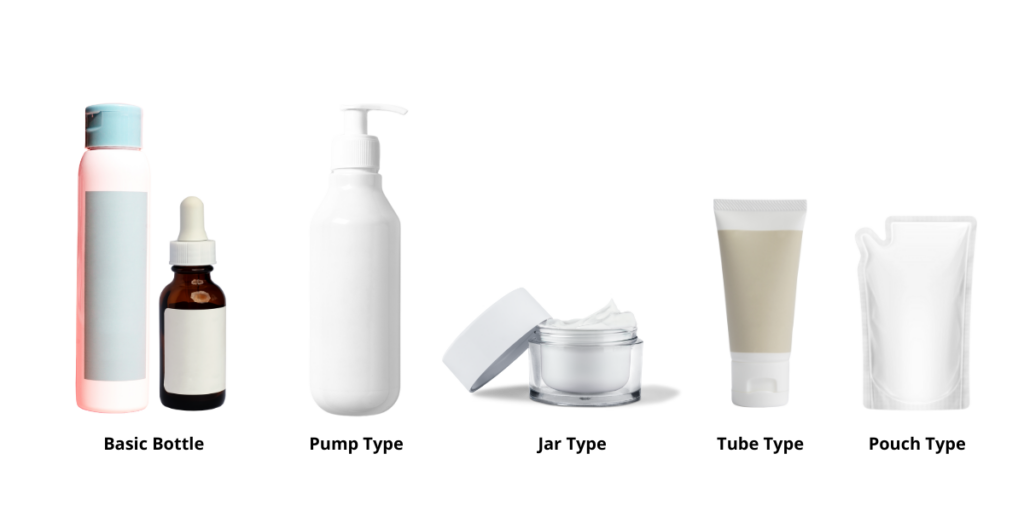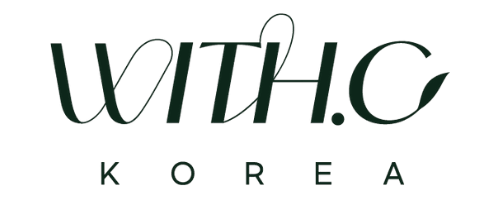The quotation for cosmetic OEM ODM varies depending on the container to be used
When carrying out cosmetic OEM and ODM, unexpected problems arise. It’s a packaging container.
When receiving a request to manufacture a product, it is easier to provide a quote based solely on the cosmetics content. When considering packaging, there are many things to consider, including container selection, printing method, type of printing color, and materials for each stage of packaging.
Therefore, the initial estimate given and the estimate calculated when the product is completed are bound to differ.
Let’s take the example of making cream.
Packaging materials include: Container (printed or sticker) + lead seal + seal label + single box (printed or sticker)
There are more subsidiary materials than you think, right? Today, let’s look at courage first.
[Container Type]
Containers come in the form of general bottles, pumps, jars, tubes, and pouches.
1. General Bottle
: It uses for products such as general toner, essence, eye makeup remover, etc. However, depending on the formulation and product, the lid must be selected as a regular cap, one-touch cap, or spoid(dropper).
2. Pump type
: This is a form commonly used in body wash, body lotion, mist, etc. Essence is also often used in the pump type, and like a regular bottle, the type of lid determines how the product comes out.
3. JAR type
: Often used in cream products. A round-shaped container simply consists of a lid and two bodies, but if you want to shape the container into a square or polygon, you have to put a separate product container inside the body, which increases the cost.
4. Tube type
: Commonly used for moisturizing cream, BB cream, lip balm, etc. and is the cheapest container. Like a general bottle, the lid can be changed to a regular cap or one-touch cap. Since this is a product that is used by squeezing, care must be taken to adjust the size of the hole as it has to control how much comes out depending on the product formulation. In the industry, this hole is controlled by ‘pi’ size. For general sunscreen and BB cream, It uses 30 pi.
5. Pouch
: Commonly used in refillable products, packs, or disposable products. A lid can be added to the entrance, allowing cosmetics to be used in a pouch.
There are various shapes of containers, but you must also decide what type of material they are made of.

[Material Type]
1. Plastic
: It is light and cheap, so it is the most convenient to use. These days, brands often produce matte products for appearance, but since it is difficult to recycle, many vegan companies are using transparent products even though they are less aesthetically pleasing.
2. Heavy Blow
: This is a container that has recently been in the spotlight, and was created to compensate for the shortcomings of glass bottles, which are easy to break. Although it is a plastic container, it is somewhere between glass and PET and is 4 to 10 times heavier in weight and thickness than regular PET. In particular, it has the advantage of being cheaper than glass and easy to recycle.
3. Glass
It has the advantage of giving a luxurious feel and being easy to recycle. However, the biggest drawback is that you have to be especially careful when transporting it and it is heavy. However, it is said that the MOQ for glass containers is relatively low.
4. Others
: In Korea, this material is called Hifax. It is a container made by adding a resin called ‘Adflex Q 300 F’ to PE or PP, and has a unique matte atmosphere. It is not hard and is flexible like silicone.
[Other Considerations]
1. Printing(Silkscreen)
: You need to decide whether to print on the container itself and, if so, in how many colors. Usually in Korea, $0.08~0.1 is added per container for two colors. This is because the cost of printing film is involved.
2. Attaching Sticker
: Since printing directly on the container is very expensive, companies just starting out often use stickers. This is because it is much cheaper to just create and attach stickers to containers without further processing.
3. Post-Processing
: If you want to add a red or gold line to the container lid or make the container matte, post-processing is required. In this case, it can become expensive and difficult to recycle.
With so many factors going into choosing a container, it is understandable that the price varies. So, the most recommended method is to use the cosmetics container you like as a reference and inquire with the manufacturer. However, when choosing a reference product, it is a good idea to refer to the above and consider the following.
- What type is it?
- What material is it?
- Printing and post-processing
If you have any additional questions, please contact us at any time!
